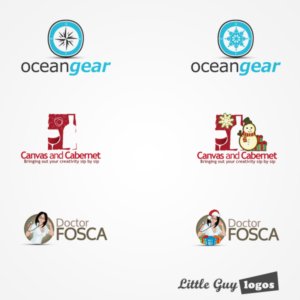SEO Tips for Beginners
It’s no secret that SEO (Search Engine Optimization) can be extremely beneficial to a website’s and business’s overall success. But getting there can be complex, especially for beginners, and it can be easy to feel overwhelmed. A simple Google search for “SEO” returns almost 500 million results, which is more information than anyone could read in a lifetime. On top of that much of the information is now either out-of-date or not relevant. In reality, there are quite a few simple things you can start with to begin a highly effective SEO strategy. Here are 5 SEO tips for beginners.
Research and use relevant keywords
It makes sense that keywords are key when it comes to SEO success. Think about what your audience would be searching for on your website. What is their search intent? What are they really looking for? Understanding search intent is extremely beneficial when it comes to planning site content and your SEO approach.
There are a number of tools and strategies to use to ensure we get a good selection of keywords together. Start by brainstorming potential keywords. Just simply write down everything that is relevant., such as services you offer, products you have, close locations, etc. You can also use a keyword research tool to help you identify new keywords. Google offers a tool that forms part of its Ads PPC service, but there are other providers that offer free and paid variations. Lastly, do your own keyword searches on search engines. When you do a search in a search bar, there will be a list of suggestions at the bottom of the page. You can add any relevant suggestions to your list.
Optimize titles and meta descriptions
Now that you have your keyword list, you can use them to optimize your titles, descriptions and other forms of content. You want to get keywords into the title of pages, but in a natural way. Remember that these show up in search results, so aim to clearly indicate what the page is about and entice users to click on it. Try to include where, what and who if possible.
Next we want to optimize the meta description. A page’s description doesn’t have as big of an impact on SEO, but it can still help. The meta description should explain the content on your page and further convince a user to click.
Optimize for mobile
Almost 60% of searches are done from a mobile device. Google favors sites that are mobile friendly. Back in 2019, Google declared that “mobile-first indexing will be enabled by default for all new, previously unknown to Google Search, websites.” This means Google now crawls the mobile versions of sites first, before desktop various. And eventually, Google won’t index your site at all if it isn’t mobile friendly. So how do you go about optimizing your site for mobile? Here are some quick tips:
- Keep page load time down
- Make reading and navigation easy
- Make it responsive to smaller screen size, meaning there’s no pinching or zooming required
Create content, then optimize it
You don’t want to start your content by picking out your keywords and massaging content to match. Write content you’d like to read, things that are interesting, useful, fun and engaging; then optimize the content for SEO. Once you’ve fully written the content, go back and pick out places to insert keywords. Don’t forget to also optimize:
- Titles
- Descriptions
- Header tags
- Images
Build relevant links
Link building carries a bad reputation due to marketers that use black hat strategies for SEO. But when done correctly, link building is extremely helpful when it comes to driving visibility, especially for competitive keywords. Developing this requires having the right kind of links pointing to your site. These links help Google and other search engines determine your relative importance and to order search results using these metrics. Google has commented on this point by saying,
“Links help our crawlers find your site and can give your site greater visibility in our search results. When returning results for a search, Google uses sophisticated text-matching techniques to display pages that are both important and relevant to each search. Google interprets a link from page A to page B as a vote by page A for page B. Votes cast by pages that are themselves ‘important’ weigh more heavily and help to make other pages ‘important.’”
This can be the most difficult part of SEO, but there are some strategies to use to gain safe backlinks to help improve your visibility in search results. You can utilize highly credible directory sites, as well as a competitor link analysis to help identify new link opportunities.
Final Thoughts
Having success with SEO isn’t something you can do overnight. It can take months and even years to create a site and content strategy that a search engine will favor. Often with SEO it is 20% of the effort that will get you 80% of the results and for most small businesses this is a great starting point that will help your site be more visible in organic search.
More from Onimod Global
Onimod Global releases the latest digital marketing news and essential marketing tips every Tuesday and Thursday! To catch up on the top digital marketing news and trends, click here. To find out more about who we are and what we do, click here.


